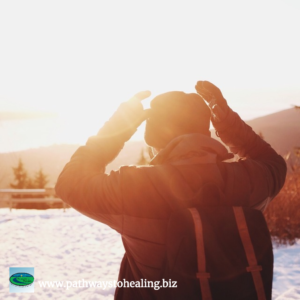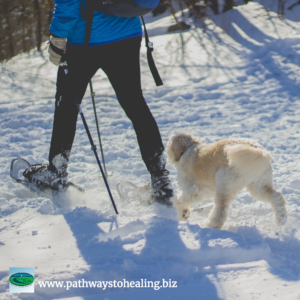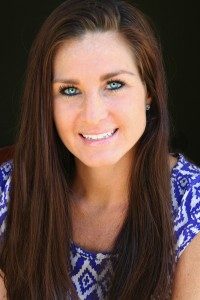By Dr. Alyssa Musgrove
 Being from the Great White North, a.k.a. Alaska, I have encountered numerous people affected by the “winter blues.” As we head into the height of the winter season, cooler weather combines with shorter periods of daylight and sunshine. Some people welcome this seasonal change, but others may experience something more serious — a type of depression called Seasonal Affective Disorder (SAD). SAD is a form of clinical depression that comes and goes based on a specific seasonal pattern, hitting around the same time each year. Studies show about half a million Americans are affected by SAD.
Being from the Great White North, a.k.a. Alaska, I have encountered numerous people affected by the “winter blues.” As we head into the height of the winter season, cooler weather combines with shorter periods of daylight and sunshine. Some people welcome this seasonal change, but others may experience something more serious — a type of depression called Seasonal Affective Disorder (SAD). SAD is a form of clinical depression that comes and goes based on a specific seasonal pattern, hitting around the same time each year. Studies show about half a million Americans are affected by SAD.
SAD symptoms vary from person to person. Symptoms can start out mild and become more severe in peak winter months. People suffering from SAD may experience a loss of interest in activities or decrease in motivation to socialize with friends and family. Other common symptoms include trouble sleeping, decrease in energy, weight gain, irritability, and appetite changes — especially cravings for foods high in sugar and carbohydrates.
Unsurprisingly, location makes a difference in the occurrence of this condition since sunlight and temperature play a major role. SAD is more common among people who live far north or south of the equator due to abbreviated daylight hours. For example, in my hometown in Fairbanks, Alaska on December 21 (the shortest day of the year) there is about 3 to 4 hours of daylight and temperatures are often below zero. You can imagine the effect this has on the brain and body! In Georgia, the shortest day of the year still has 9 to 10 hours of daylight and is not as cold.
It can be challenging to differentiate if a person is suffering from “traditional” depression or seasonal depression, but the main difference is the duration. With SAD, feelings will begin in September, be the worst in peak winter months, and ease up once spring rolls around in March or April. Health professionals typically wait to see if symptoms persist over two or three consecutive winter seasons before making an official diagnosis, however, no one should have to wait that long to start feeling better! There are several natural remedies that can provide relief.
 Vitamin D is known as the “Sunshine Vitamin” because the body produces it when exposed to the sun. Low vitamin D levels have been linked to depression. Check with your doctor to make sure your vitamin D levels are up to par. Adding a supplement could help you feel better, while also improving bone health and boosting your immune system.
Vitamin D is known as the “Sunshine Vitamin” because the body produces it when exposed to the sun. Low vitamin D levels have been linked to depression. Check with your doctor to make sure your vitamin D levels are up to par. Adding a supplement could help you feel better, while also improving bone health and boosting your immune system.
It can be challenging to get to the gym or go outside when you are not feeling great, but regular exercise has been proven to help with all types of depression. Staying active increases the production of endorphins – those feel-good chemicals that help ease depressive feelings and clear brain fog. One study showed just 20-30 minutes of walking for 10 consecutive days was enough to significantly reduce depression.
Research also has shown consistency and frequency of exercise has more positive effects then duration or intensity. You do not need to run a marathon or lift massively heavy weights in order to reap the benefits of exercise. Join a group fitness class, walking club or practice yoga. Also, when there is a ray of sunshine or the temperature is tolerable, take advantage! Get as much natural light as possible — your brain and body will thank you for it later. If you can squeeze in a workout outside, great! But even playing fetch with the dog outside will boost your body’s ability to make proper hormones and regulate your circadian rhythm.
 Talking it out is another option. Cognitive behavioral therapy is a type of psychotherapy that helps people change unhealthy habits of thinking, feeling and behaving into positive solutions. Reach out to friends and family, and establish a support network to help ease feelings of isolation.
Talking it out is another option. Cognitive behavioral therapy is a type of psychotherapy that helps people change unhealthy habits of thinking, feeling and behaving into positive solutions. Reach out to friends and family, and establish a support network to help ease feelings of isolation.
Finally, be sure to eat a healthy diet. People with SAD tend to crave sweet treats and sugary carbs, which make them look and feel worse. Try to focus on lean protein, leafy greens and fish, which will keep hormones in check and boost serotonin.
These simple lifestyle changes can greatly impact overall mood and health – and help minimize the “winter blues,” should they come knocking on your door this winter.
 Pathways to Healing specializes in holistic chiropractic care. Dr. Alyssa Musgrove draws on a variety of techniques, including chiropractic, kinesiology, nutrition, food allergy testing and lifestyle counseling to assist clients in achieving optimal health and wellness in one setting. Pathways to Healing is located at 1022 Founders Row, Lake Oconee Village, Greensboro. The office can be reached at 706-454-2040.
Pathways to Healing specializes in holistic chiropractic care. Dr. Alyssa Musgrove draws on a variety of techniques, including chiropractic, kinesiology, nutrition, food allergy testing and lifestyle counseling to assist clients in achieving optimal health and wellness in one setting. Pathways to Healing is located at 1022 Founders Row, Lake Oconee Village, Greensboro. The office can be reached at 706-454-2040.